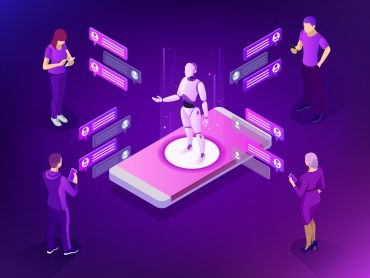
Real-time systems and the use of real-time technologies for automation, autonomy, and AI delivered quantifiable business benefits in 2023. Expect more of the same in 2024.
Real-time became ever more mainstream in 2023. More businesses leveraged real-time systems and data to automate processes, make devices (e.g., robots and vehicles) autonomous, and complement the benefits of advanced analytics and AI.
However, there are potential legal, liability, and other obstacles that could derail some major applications of real-time systems. They will need to be carefully watched and addressed to ensure progress continues.
That said, examples abound of the value real-time delivered in 2023. And it is highly likely that the use of real-time will grow in the years to come. Here are application areas where real-time helped:
- Waymo driverless cars had better safety records than human-driven vehicles during its first 7.1 million miles of operations in Arizona and California. During that time, its vehicles had only three accidents with injuries, which is significantly lower than the 13 accidents with injuries that would be common for that mileage with traditional vehicles.
- Recommender systems have always relied on vast amounts of data. Leading businesses are now complementing their traditional analysis of existing data by enhancing their systems with Large Language Models (LLMs) to provide more relevant next-best-action recommendations.
- As the Internet of Things (IoT) devices become more prevalent and powerful, businesses are turning to new technologies to capture, share, analyze, and use the vast volumes of real-time data they produce to drive informed decision-making.
- Digital twins, and especially those that are constantly fed real-time data about the state of the physical part of the twin, have created a new “phygital” market of systems that provide the insights needed for making evidence-based decisions.
- Automation holds the promise to help make informed decisions, guide actions, and mitigate and manage incidents in real time. But many organizations are still doing things manually. Increased use of real-time technologies holds the key to wider adoption of automation.
- Apache Kafka, one of the core elements in many real-time systems, has shown remarkable resilience over the years. It has evolved technically to a point today where it is widely used in applications ranging from real-time data processing to stream processing, event sourcing, and messaging.
Obstacles loom for pervasive AI, autonomy, and automation
Despite the progress made in 2023, several issues that will dominate 2024 will determine whether industry and end-user company automation, AI, and autonomy efforts move forward successfully.
Some points of concern to keep an eye on include:
Legal challenges: In 2023, several writers, performers, and content generation organizations filed copyright violation suits against OpenAI for training ChatGPT on books and other content without consent. Last week, the New York Times upped the ante by suing Microsoft and OpenAI for copyright infringement and more.
One aspect of the suit is that the companies infringed on the newspaper’s copyright by using New York Times content to train its models. That work was done without permission, acknowledgment, or compensation.
Another aspect of the suit is that the technology was used to summarize, rephrase, and expand on content, presenting it in Bing search results. Again, this was done in violation of the papers’ copyright. That presentation did not include a link to the original article.
Beyond the legal aspects here, many content sites are troubled by Google and Microsoft efforts that present answers to search questions in the form of text answers. That practice is driving up what is called zero-click searches, where an answer to a person’s search query is presented at the top of the page, which results in no click or link back to the original content.
Back to the suit…the suit also notes that in some of these summaries, incorrect information is attributed to an article. The suit highlights specific content generated about a Wirecutter article. The suit claims that due to the incorrect information in the summary, the company’s “brand is damaged by incidents that erode consumer trust and fuel a perception that Wirecutter’s recommendations are unreliable.”
Liability and business risks: Hallucinations, models trained on biased data, and more are cause for concern when using AI, automation, and more.
In one case, a devious customer tricked an auto dealership’s chatbot into agreeing to sell a new 2024 Chevy Tahoe for $1. The dealership ended up deactivating its chatbots after the incident.
A more serious problem emerged with the faulty use of AI by an insurance company to deny elderly patients their necessary coverage. That is the focus of a lawsuit filed in November by the families of two deceased family members. As reported at that time, the suit contends that “UnitedHealth illegally denied elderly patients care owed to them under Medicare Advantage Plans by deploying an AI model known by the company to have a 90% error rate, overriding determinations made by the patients’ physicians that the expenses were medically necessary.”
Energy consumption: For years, there has been industry concern about the amount of energy needed to train AI models. For example, a 2019 study estimated the carbon footprint of training a single early large language model (GPT-2 at that time) was about 300,000kg of CO2 emissions. Several publications noted that it was the equivalent of 125 round-trip flights between New York and Beijing.
Obviously, today’s models, which are much bigger, have significantly greater energy consumption and larger carbon footprints.
But there is more to this story that will have implications in 2024 and beyond. Specifically, most of the work in the past focused on the energy to train models. Now, researchers are examining the energy to run such models. This aspect will be increasingly important since AI is expected to be part of normal business operations.
One recent study found such energy use is considerable. Given the number of users for popular models like ChatGPT, “it could take just a couple of weeks for such a model’s usage emissions to exceed its training emissions,” according to a new study by researchers at the AI startup Hugging Face and Carnegie Mellon University.
A final word
Real-time systems and the use of real-time technologies for automation, autonomy, and AI are delivering quantifiable business benefits today. Expect more of the same in the year to come. But also keep an eye on the various issues that may disrupt or limit the use of these technologies in the future.




























